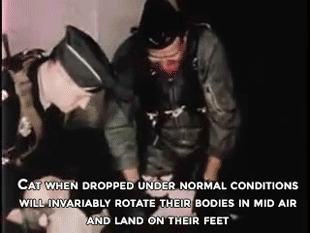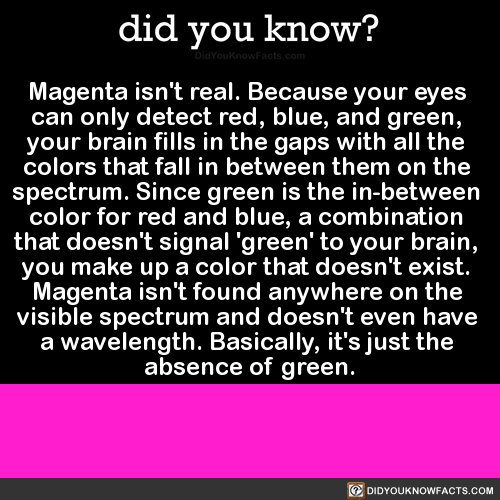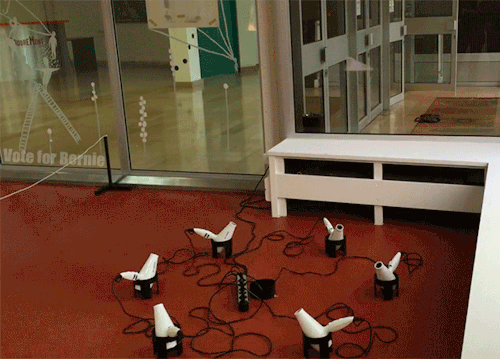Which Scientist Should You Fight
which scientist should you fight
geologist: will throw copious amounts of rocks at you. not recommended unless you can also throw equal amounts of rocks back
botanist: knows 1001 ways to poison you. probably shouldn't fight
zoologist: knows 1001 animals that can kill you. probably shouldn't fight either
entomologist: spiders. enough said.
physiologist: they know too much about the human body and how to cause optimal pain with minimal damage. not safe.
geneticist: will unleash their army of mutated fruit flies at you. can be either good or bad thing, depending on your preference for flies with legs growing out of their eyes
immunologist: they have perfected the t-cell inspired technique of "death by neglect". if you fight them you will die in the saddest way possible
microbiologist: please don't fight someone who is already pissed about antibiotic resistance and can identify bacteria based solely on their smell
climatologist: will choose the battlefield as somewhere in the path of a category 5 hurricane and then leave you to die. do not fight please
environmental scientist: they can control the entire world do you really want to fight them
chemist: have you seen breaking bad? no, do not fight them. do NOT
physicist: will kill you with math. not the best way to go
herpetologist: can probably speak parseltongue and know just which frogs are best at taking over your habitat. only fight if you live in antarctica
cancer biologist: has immediate access to at least 5 different tumor cell lines and knows exactly where to inject them in your heart to cause metastases. don't even look them in the eye
marine biologist: is a real life aquaman. will lure you with cute river otters and then finish you off with some terrifying deep sea creature. better to just stay home and never leave
psychologist: is basically a mind reader. will drown you in your deepest darkest fears. 10/10 do not recommend to fight
molecular biologist: will kill you organelle by organelle. you will die a slow and painful death while covered in budding yeast
statistician: their power is always over 80%, and they will quickly punt you in the path of a normal distribution even before you can yell "Wilcoxon!"
archaeologist: can use a trowel 59 different ways, and only 9 are for digging. one can only guess the other 50, so may be advisable to stay far away
astronomer: will launch you into space and send you to a planet so inhospitable not even matt damon can make it back this time
pharmacologist: why would you ever fight someone who knows all about drugs. why
computer scientist: they know the perfect algorithm for death. do not fight, even with a firewall
linguist: no matter where you are, they can talk about you behind your back in the native tongue. do you really want death by humiliation. do you
dinosaurologist: are you kidding me?? the answer is no
sociologist: yea
More Posts from Science-is-magical and Others
Some intriguing exoplanets
An exoplanet or extrasolar planet is a planet that orbits a star other than the Sun. The first scientific detection of an exoplanet was in 1988. However, the first confirmed detection came in 1992; since then, and as of 1 April 2017, there have been 3,607 exoplanets discovered in 2,701 planetary systems and 610 multiple planetary systems confirmed.

1- Kepler-186f
was the first rocky planet to be found within the habitable zone – the region around the host star where the temperature is right for liquid water. This planet is also very close in size to Earth. Even though we may not find out what’s going on at the surface of this planet anytime soon, it’s a strong reminder of why new technologies are being developed that will enable scientists to get a closer look at distant worlds.

2- CoRoT 7b
The first super-Earth identified as a rocky exoplanet, this planet proved that worlds like the Earth were indeed possible and that the search for potentially habitable worlds (rocky planets in the habitable zone) might be fruitful.

3- Kepler-22b
A planet in the habitable zone and a possible water-world planet unlike any seen in our solar system.

4- Kepler 10-b
Kepler’s first rocky planet discovery is a scorched, Earth-size world that scientists believe may have a lava ocean on its surface.

5- 55 Cancri e
55 Cancri e is a toasty world that rushes around its star every 18 hours. It orbits so closely – about 25 times closer than Mercury is to our sun – that it is tidally locked with one face forever blisters under the heat of its sun. The planet is proposed to have a rocky core surrounded by a layer of water in a “supercritical” state, where it is both liquid and gas, and then the whole planet is thought to be topped by a blanket of steam.

6- 51 Pegasi b
This giant planet, which is about half the mass of Jupiter and orbits its star every four days, was the first confirmed exoplanet around a sun-like star, a discovery that launched a whole new field of exploration.

7- Kepler-444 system
The oldest known planetary system has five terrestrial-sized planets, all in orbital resonance. This weird group showed that solar systems have formed and lived in our galaxy for nearly its entire existence.

8- PSR B1257+12 system
Discovered in 1992 and 1994, the planets that orbit pulsar PSR B1257+12 are not only the smallest planetary bodies known to exist outside our solar system, they also orbit a neutron star. These weird “pulsar planets” demonstrated that planets exist in all environments in the galaxy – even around the remnants of an exploded star.

9- HD 80606 b
This world has the most eccentric orbit, and as one scientist put it, “wears its heart on its sleeve,” with storms, rotation, atmospheric heating, and a crazy orbit all plainly visible.

10- OGLE-2005-BLG-390
Considered to be the first cold super Earth, this exoplanet began to form a Jupiter-like core of rock and ice, but couldn’t grow fast enough in size. Its final mass is five times that of Earth. The planet’s nickname is Hoth, after a planet from Star War
Credits: NASA / JPL-Caltech

One of my favorite things about biology is that there are so many diagrams like this that look like shitposts if you remove any and all context from them
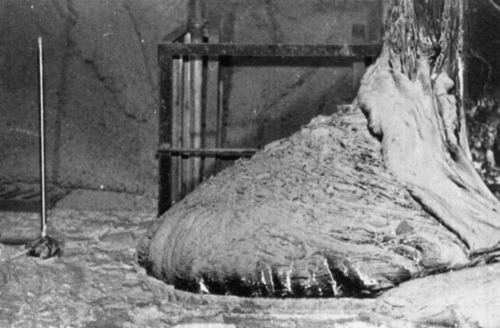
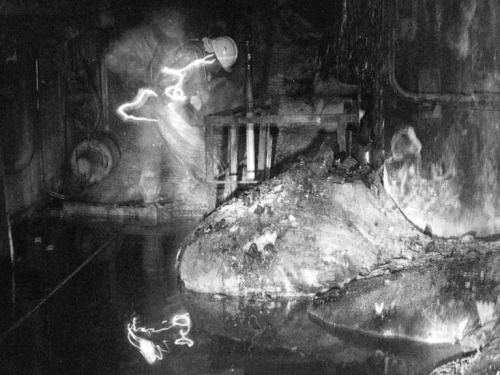
One of the most dangerous pictures ever taken - Elephant’s Foot, Chernobyl. This is a photo of a now dead man next the ‘Elephant’ Foot’ at the Chernobyl power plant.
The image distortions in the photo are created by intense level of radiation almost beyond comprehension. There is no way the person in this photo and the person photographing him could have survived for any more that a few years after being there, even if they quickly ran in, took the photos and ran out again. This photo would be impossible to take today as the rates of radioactive decay are even more extreme now due to a failed military experiment to bomb the reactor core with neuron absorbers. The foot is made up of a small percentage of uranium with the bulk mostly melted sand, concrete and other materials which the molten corium turns into a kind of lava flow. In recent years, it has destroyed a robot which tried to approach it, and the last photos were taken via a mirror mounted to a pole held at the other end of the corridor for a few seconds. It is almost certainly the most dangerous and unstable creation made by humans. These are the effects of exposure: 30 seconds of exposure - dizziness and fatigue a week later 2 minutes of exposure - cells begin to hemorrhage (ruptured blood vessels) 4 minutes - vomiting, diarrhea, and fever 300 seconds - two days to live
A researcher wrote about why neural networks like picdescbot hallucinate so many sheep – and yet will miss a sheep right in front of them if it’s in an unusual context. Enjoy!

After the Battle of Shiloh in 1862, many Civil War soldiers’ lives were saved by a phenomenon called ‘Angel’s Glow.’ The soldiers, who lay in the mud for two rainy days, had wounds that began to glow in the dark and heal unusually fast. In 2001, 2 teens won an international science fair by discovering the soldiers had been so cold that their bodies created the perfect conditions for growing a bioluminescent bacteria, which ultimately destroyed the bad bacteria that could’ve killed them. Source Source 2 Source 3
-
 sunnyjustice liked this · 8 months ago
sunnyjustice liked this · 8 months ago -
 martin-luther-on-my-mind liked this · 11 months ago
martin-luther-on-my-mind liked this · 11 months ago -
 queerskittles reblogged this · 1 year ago
queerskittles reblogged this · 1 year ago -
 fictionalgod reblogged this · 1 year ago
fictionalgod reblogged this · 1 year ago -
 fictionalgod liked this · 1 year ago
fictionalgod liked this · 1 year ago -
 10thingsihateabout-all-yall reblogged this · 1 year ago
10thingsihateabout-all-yall reblogged this · 1 year ago -
 luckyicekitsune liked this · 1 year ago
luckyicekitsune liked this · 1 year ago -
 recaventio liked this · 1 year ago
recaventio liked this · 1 year ago -
 binewsiesfan2020 liked this · 2 years ago
binewsiesfan2020 liked this · 2 years ago -
 nothingwronghere reblogged this · 2 years ago
nothingwronghere reblogged this · 2 years ago -
 vanilla-latte liked this · 2 years ago
vanilla-latte liked this · 2 years ago -
 42blackcats liked this · 3 years ago
42blackcats liked this · 3 years ago -
 mdpikachu reblogged this · 3 years ago
mdpikachu reblogged this · 3 years ago -
 violets-with-violence reblogged this · 3 years ago
violets-with-violence reblogged this · 3 years ago -
 katiekelpies liked this · 3 years ago
katiekelpies liked this · 3 years ago -
 magicalanimedonkeyboy liked this · 3 years ago
magicalanimedonkeyboy liked this · 3 years ago -
 altirian liked this · 3 years ago
altirian liked this · 3 years ago -
 thecrabman-sebastian liked this · 3 years ago
thecrabman-sebastian liked this · 3 years ago -
 addie-lover-of-stories liked this · 3 years ago
addie-lover-of-stories liked this · 3 years ago -
 vulpixen reblogged this · 3 years ago
vulpixen reblogged this · 3 years ago -
 vulpixen liked this · 3 years ago
vulpixen liked this · 3 years ago -
 i-put-the-wit-in-dimwit reblogged this · 3 years ago
i-put-the-wit-in-dimwit reblogged this · 3 years ago -
 i-put-the-wit-in-dimwit liked this · 3 years ago
i-put-the-wit-in-dimwit liked this · 3 years ago -
 ears-queers-gears-n-fears liked this · 3 years ago
ears-queers-gears-n-fears liked this · 3 years ago -
 tamaranotamara liked this · 3 years ago
tamaranotamara liked this · 3 years ago -
 beholdthemem reblogged this · 3 years ago
beholdthemem reblogged this · 3 years ago -
 dr1f7w00d reblogged this · 3 years ago
dr1f7w00d reblogged this · 3 years ago -
 justasmidgx liked this · 3 years ago
justasmidgx liked this · 3 years ago -
 starlightxlatte liked this · 3 years ago
starlightxlatte liked this · 3 years ago -
 misfitshade liked this · 3 years ago
misfitshade liked this · 3 years ago -
 whatmakesusshuman reblogged this · 3 years ago
whatmakesusshuman reblogged this · 3 years ago -
 nicolethedork reblogged this · 3 years ago
nicolethedork reblogged this · 3 years ago -
 nicolethedork liked this · 3 years ago
nicolethedork liked this · 3 years ago
